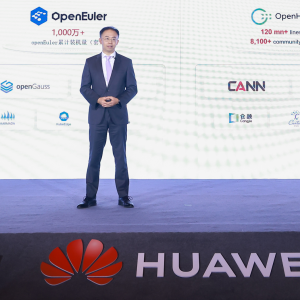In his novel, The Maltese Falcon, Dashiell Hammett’s detective Sam Spade tells the story of Charles Flitcraft. It seems that Flitcraft disappeared from Tacoma, according to Spade, like a fist when you open your hand. He left behind an orderly life, a real estate business and a family. Five years later, Spade was sent by his firm to Spokane to look into a possible sighting of the missing person. Sure enough, it was Flitcraft, who told Spade his story. The day he disappeared, Flitcraft was walking past a construction site on his way to lunch when a piece of the unfinished building broke loose. It fell several stories and landed so close to him that a chunk of sidewalk flew up and cut Flitcraft’s face, which still bore a small scar. Flitcraft was startled. He felt like somebody had taken the lid off life and let him look at the works, Spade recalls. Flitcraft suddenly realised that his sensible, responsible existence had gotten him out of step, not in step, with life’s randomness. He took off that very day, drifting around for a couple of years and winding up in Spokane, living under the name Pierce; he got married again, to a woman much like his first wife, and built an orderly life resembling the one he left in Tacoma. Spade didn’t think Flitcraft was aware of the similarities. He adjusted himself to beams falling, Spade said, and then no more of them fell, and he adjusted himself to them not falling.
Falling out of step
During the seventies, IBM began falling out of step. Nimbler and more clever firms beat it to the application of semiconductor memory and microprocessors. A plague of anti-trust suits – most notably that filed by the US Department of Justice – distracted its attention, limited its freedom and sapped its strength. Perhaps most importantly, a change in the consciousness among the young and talented diverted the leaders it would need in the 1980s. New high technology companies lured graduates away from its recruiters by offering fun, excitement and possibilities. IBM’s promise of tranquil security in a vast corporate civilisation just didn’t cut the mustard. IBM would adjust… eventually. But Armonk was in no rush. IBM felt no pain during most of the late seventies and early eighties. On the contrary. It grew apace. To be sure, there were warnings that IBM was vulnerable, even fragile. The impact of the 4300 mid-range announcement in 1979 – IBM’s profit plunged as mainframe customers switched from purchase to rental – provided the company’s management with mortifying proof of its fallibility. Nonetheless, IBM persisted with its Watsonian policies and practices. It still seemed to believe that the only thing big enough to hurt it seriously was itself. Then, in 1980, conditions suddenly changed – and to a surprising degree. US politics took a turn to the right, and government lessened its oversight of the private sector.
By Hesh Wiener
A complex of new developments ensued, among them the settlement of the government’s anti-trust action against IBM. At the same time, the Federal Reserve was squeezing inflation out of the US economy, a manoeuvre that would be followed by an unprecedented business expansion both at home and abroad. IBM adjusted as best it could to the changed climate, renovating its organisational structure, selling off its rental base and forming IBM Credit Corp. It expanded the range of computer products it offered to span the market, selling everything from personal computers to giant mainframes equipped with vector processors. After IBM broke the shackles of tradition, its situation seemed to improve but had actually deteriorated. The factors that stimulated Big Blue also helped its adversaries. Certain opportunities were snatched right out from in front of IBM by competitors with greater speed and agility. Each time this happened, plodding IBM persevered. Its management spoke with confidence, implicitly likening their company to the tortoise and its rivals to the hare. Yet once again, IBM got lucky. By the middle of the decade, a boom was underway in IBM’s foreign markets, ame
liorating the more severe effects of competitive pressure at home. Europe in particular held the promise of large and easy reported profit, assisted by a period of favourable currency translation. Meanwhile, years of opportunity have passed, and IBM has yet to thrill its shareholders with the turnaround so often and so ineptly forecast by a fawning press. The vicissitudes of a maliciously fluctuating currency market have not helped IBM. Nor has the fear of recession creeping across the terrain of US business. Nor will a downturn in Europe or Japan, first warnings of which are now appearing in the interest-choked UK economy. The changed IBM may have coped with recent events far better than its former self would have. But its best has not been good enough for customers or shareholders. Clearly, IBM can no longer hold onto its client base with promises of future systems. And it cannot talk up its share price by holding out the dream of a unified European market in 1992 or an East Bloc yearning to buy Blue. Other problems loom on the Pacific Rim, where Japanese customers may switch their allegiance from IBM to indigenous companies. Fujitsu and Hitachi have finally swallowed their pride and now have room to gulp down portions of IBM’s market share. They are committed to offering IBM-compatible mainframe products at home. The competition isn’t going to rest, so IBM can’t either. In the short run, the company can get improved products out the door, cut prices and sell as hard as it can. But in the long run, it has to find a way to manage successive product cycles. More accurately, it has to manage its customer relations better throughout its key product cycles. Users that keep the faith keep the hardware, too. Oddly, while business conditions haven’t returned to those of two decades ago, IBM seems to be acting as though they have. Or as if they soon will. Maybe IBM even believes that by changing it can force its surroundings to adapt. In any event, bored or dissatisfied with its present corporate philosophy, IBM is harkening back to the strategies of yesteryear. Its main goal is once again account control established in part by assembling an impenetrable lease portfolio.
Long lost spouse
IBM has not reverted to a month-to-month rental plan, but it has selectively provided leases that permit the customer to trade in machinery early in a lease term. IBM has not used regular price cuts to sell off its ageing rented products, but it has offered special deals to lessees buying IBM Credit’s equipment. In trying forcibly to bring back the past, IBM might get only the worst of what it wishes for. IBM may eventually find itself at the wrong end of an anti-trust suit or some such filed by a new and different Administration. But customers, which used to adore IBM, don’t have to go along. They might more closely resemble Mrs Flitcraft. When Sam Spade reported to her the whereabouts and circumstances of her long lost spouse, she did the only sensible thing. She adjusted to the conditions, and after a quiet divorce, she just went on with her life, without Flitcraft.(C) 1989 Technology News of America Co






